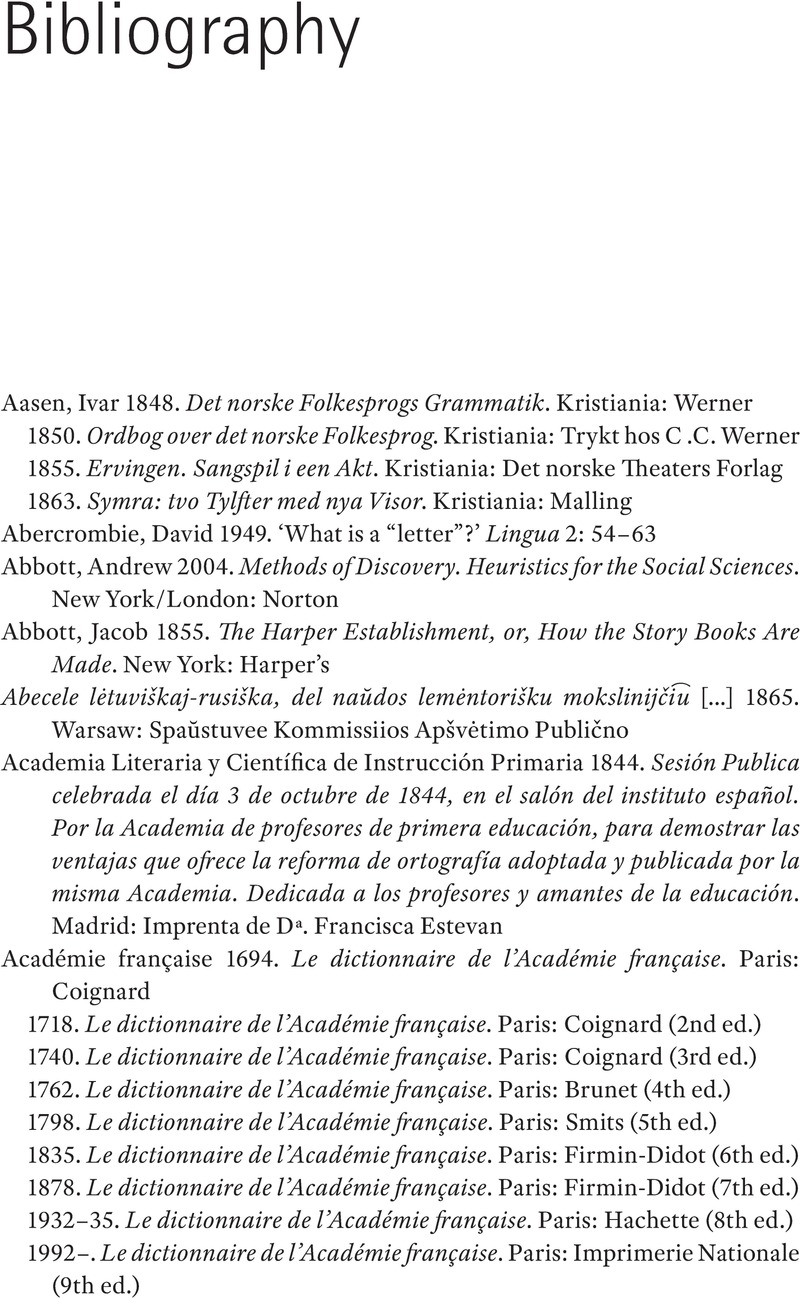Book contents
- The Cambridge Handbook of Historical Orthography
- cambridge handbooks in language and linguistics
- The Cambridge Handbook of Historical Orthography
- Copyright page
- Contents
- Figures
- Tables
- Contributors
- Abbreviations
- Part I Introduction
- Part II Structures and Theories
- Part III Organization and Development
- Part IV Empirical Approaches
- Part V Explanatory Discussions
- Bibliography
- Name Index
- Subject Index
- References
Bibliography
Published online by Cambridge University Press: 28 September 2023
- The Cambridge Handbook of Historical Orthography
- cambridge handbooks in language and linguistics
- The Cambridge Handbook of Historical Orthography
- Copyright page
- Contents
- Figures
- Tables
- Contributors
- Abbreviations
- Part I Introduction
- Part II Structures and Theories
- Part III Organization and Development
- Part IV Empirical Approaches
- Part V Explanatory Discussions
- Bibliography
- Name Index
- Subject Index
- References
Summary

- Type
- Chapter
- Information
- The Cambridge Handbook of Historical Orthography , pp. 644 - 788Publisher: Cambridge University PressPrint publication year: 2023



